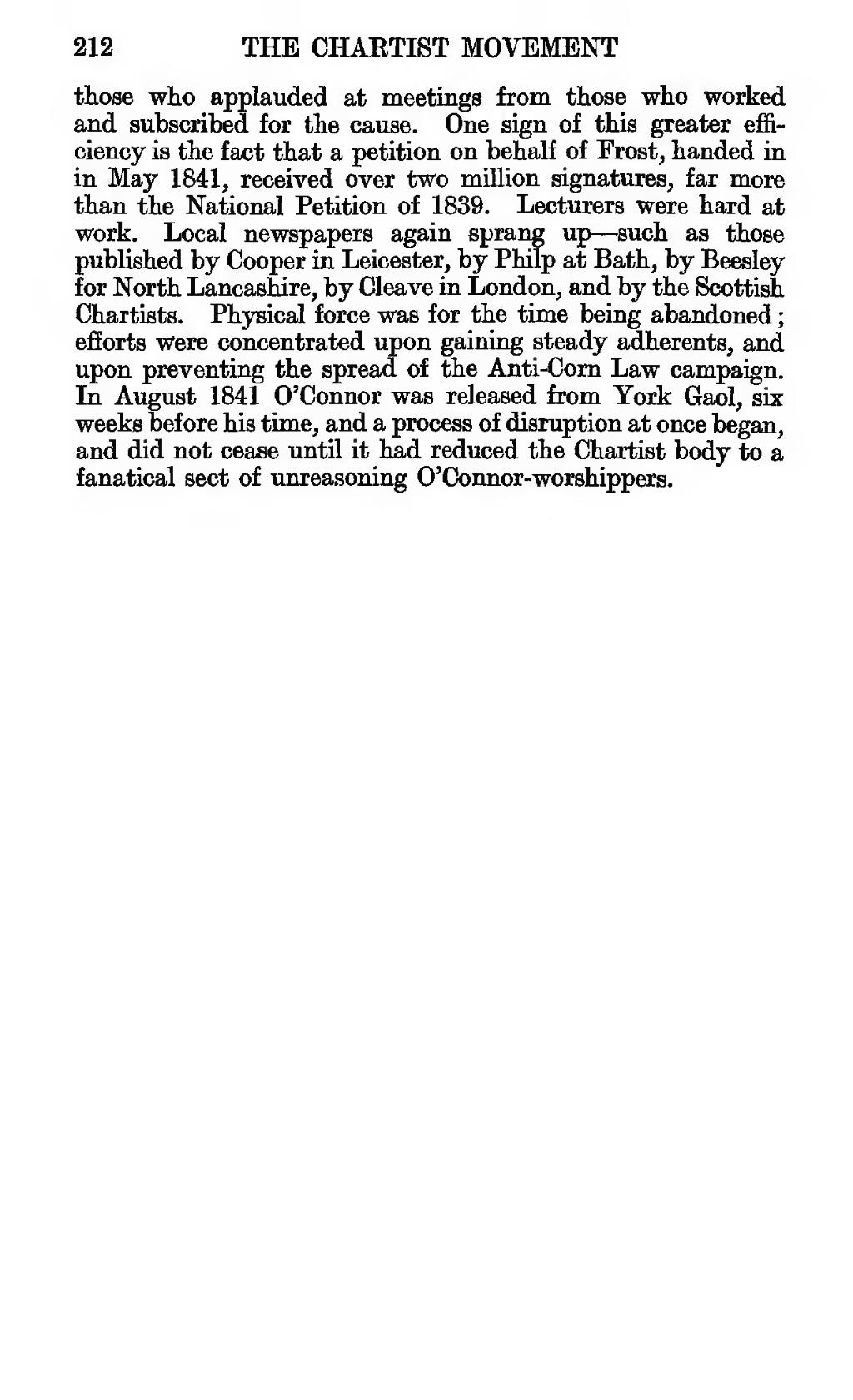those who applauded at meetings from those who worked and subscribed for the cause. One sign of this greater efficiency is the fact that a petition on behalf of Frost, handed in in May 1841, received over two million signatures, far more than the National Petition of 1839. Lecturers were hard at work. Local newspapers again sprang up—such as those published by Cooper in Leicester, by Philp at Bath, by Beesley for North Lancashire, by Cleave in London, and by the Scottish Chartists. Physical force was for the time being abandoned; efforts were concentrated upon gaining steady adherents, and upon preventing the spread of the Anti-Corn Law campaign. In August 1841 O'Connor was released from York Gaol, six weeks before his time, and a process of disruption at once began, and did not cease until it had reduced the Chartist body to a fanatical sect of unreasoning O'Connor-worshippers.
